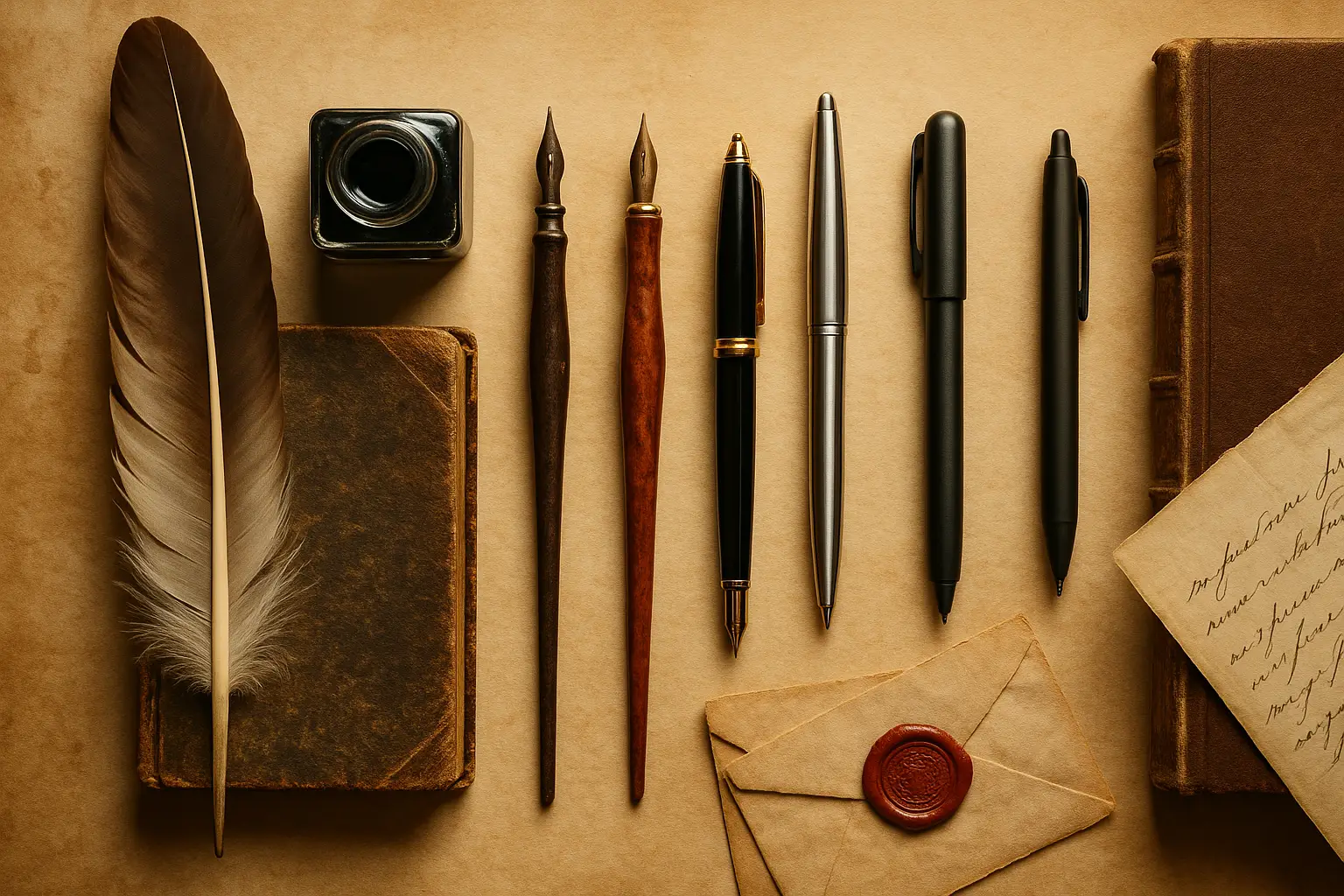History of Pens: From Quills to Modern Pens – The Evolution and Historical Journey
Pens are more than just writing tools—they are symbols of human communication, creativity, and innovation. The history of pens spans centuries, evolving from primitive tools to the sophisticated instruments we use today. This article explores the fascinating journey of pens, highlighting key developments from quills to modern ballpoint, gel, fountain, and rollerball pens.
1. The Earliest Writing Tools
Long before pens existed, humans used styluses and brushes to mark symbols on clay tablets, papyrus, and parchment. These early tools allowed civilizations to record information, create art, and communicate across generations.
- Stylus: Made from bone, metal, or wood, used to etch letters into clay or wax tablets.
- Reed Pens: Ancient Egyptians used hollow reeds to dip into ink, writing on papyrus scrolls.
These early tools laid the foundation for the development of pens as we know them today.
2. The Quill Pen Era (6th – 19th Century)
The quill pen, made from bird feathers (usually goose), dominated writing for over a thousand years.
Features of Quill Pens:
- Flexible tip for varying line thickness
- Used with inkpots
- Required frequent trimming and sharpening
Historical Significance:
- Quills were used to write important manuscripts, letters, and documents in Europe and the Middle East.
- They played a crucial role in the preservation of knowledge during the medieval period.
Quills were eventually replaced due to the inconvenience of constant maintenance and limited durability.
3. The Fountain Pen Revolution (19th Century)
The fountain pen was a major innovation, introducing a self-contained ink reservoir.
Features:
- Liquid ink flows through a nib to paper
- Refillable cartridges or converters
- Smooth and elegant writing experience
Impact:
- Increased writing speed and efficiency
- Popular among professionals and writers
- Paved the way for modern pen designs
Fountain pens made writing more accessible and reliable, reducing the mess and inconvenience of quills.
4. The Birth of Ballpoint Pens (20th Century)
The ballpoint pen, invented in the 1930s by László Bíró, transformed the writing world.
Features:
- Oil-based ink
- Rotating ball tip for smooth and consistent ink flow
- Long-lasting and low-maintenance
Advantages:
- Affordable and widely available
- Ideal for everyday use
- Less prone to smudging than fountain pens
Ballpoint pens became the standard writing tool, dominating schools, offices, and homes worldwide.
5. Modern Pens: Gel and Rollerball Pens
Modern innovations added versatility and comfort to writing instruments:
Gel Pens:
- Use water-based ink for bold, vibrant lines
- Smooth writing experience with less pressure
- Popular in journals, art, and note-taking
Rollerball Pens:
- Combine the smooth flow of liquid ink with the convenience of a ballpoint
- Provide a luxurious writing experience
- Ideal for professional and formal writing
These pens offer enhanced creativity, precision, and comfort, catering to various writing needs.
6. The Future of Pens
While digital devices have changed the way we write, pens remain relevant for personal expression, professional work, and creative endeavors. Modern developments focus on:
- Ergonomic designs for comfort
- Eco-friendly refillable options
- Smart pens that integrate with digital technology
The pen continues to evolve, bridging tradition and innovation in the world of writing.
Conclusion
From ancient styluses to high-tech smart pens, the history of pens reflects human ingenuity and the desire to communicate. Each stage—quills, fountain pens, ballpoints, gel, and rollerball pens—represents a leap in writing convenience, style, and functionality. Understanding this evolution gives us an appreciation for the simple yet powerful tool we often take for granted: the pen.







